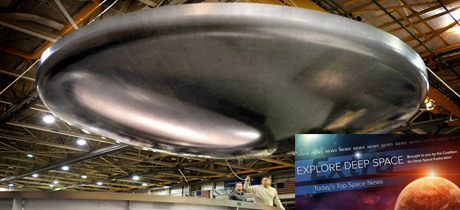In Today’s Deep Space Extra… Orion gets heat shield for test flight. A new review of data from a NASA instrument aboard India’s lunar orbiting Chandrayaan mission offers new evidence for the presence of water ice in permanently shaded regions of the Moon’s surface.
Human space exploration
NASA’s Orion spacecraft gets heat shield for daring test flight to the Moon
Coalition Member in the News – Lockheed Martin
Space.com (8/21): This week, the Orion capsule assigned to the first joint uncrewed test flight with the Space Launch System (SLS) was equipped with its heat shield at NASA’s Kennedy Space Center (KSC). The lengthy test flight that will launch Orion around the Moon and back to Earth, Exploration Mission-1 (EM-1), is planned between late 2019 and mid-2020. The shielding structure is complex and with some heritage that dates to Apollo in order to withstand re-entry temperatures approaching 5,000 degrees F.
Why the United States will beat China in the new Moon race
Coalition Member in the News – Astrobotic Technology, Inc
The Hill (8/20): China hopes to supplant the U.S. as the world’s dominant space power. Such a shift is unlikely, writes Mark Whittington, in an op-ed for the Hill. He credits White House policy decisions to make the moon rather than Mars the next destination for human explorers and to embrace the private sector as a player in the deep space exploration process. All the while, China is following the old Soviet model for managing it space programs.
Space Science
Beyond the shadow of a doubt, water ice exists on the Moon
Scientific American (8/21): India’s Chandrayaan orbiter circled the moon from 2008-09, with a NASA instrument, the Moon Mineralogy Mapper, a spectrometer, aboard. A new analysis of the spectral data offers direct evidence for the presence of water ice exposed on the lunar surface. The findings strengthen the case as well for the presence of water ice in permanently shadowed crater recesses at the lunar north and south poles. Water ice would be a critical resource for future human explorers and a source of liquid hydrogen and oxygen rocket propellants. The findings were published in the Proceedings of the National Academy of Sciences.
Don’t ignore ethical aspects of planetary protection, scientists say
Space.com (8/21): Overlooking planetary protection — the practice of preventing Earthly microbes from contaminating potentially habitable environments like Mars or Jupiter’s ice and ocean covered moon Europa and the reverse, protecting the Earth from extraterrestrial contamination, could have consequences. It could make it more difficult to prove that life may have originated elsewhere or lead to the introduction of life forms from afar to Earth before the threat potential has been eliminated.
Other News
Russia launches 2nd stage of Vostochny spaceport construction
TASS of Russia (8/21): In far East Russia, work at the Vostochny spaceport for the launch of the Angara rocket family is underway. Angara is the replacement for Russia’s venerable Proton rocket family. The new pad could be ready for use by the Angara family in 2021.
Earth’s Mini-Moons are the perfect targets to test out asteroid mining
Universe Today (8/21): A research team sees opportunity for the visionary asteroid mining industry. The Large Synoptic Survey Telescope, a wide-field telescope that is currently under construction in Chile, will be online soon. The observatory may be perfect for detecting small asteroid bodies that seem to come and go from the Earth-Moon gravitational influence. They could be the focus of brief satellite reconnaissance missions to seek out their resource and mining potential, according to a study, “Earth’s Mini-Moons: Opportunities for Science and Technology,” led by a University of Hawaii scientist.

